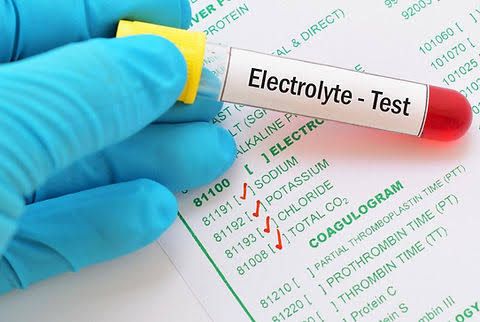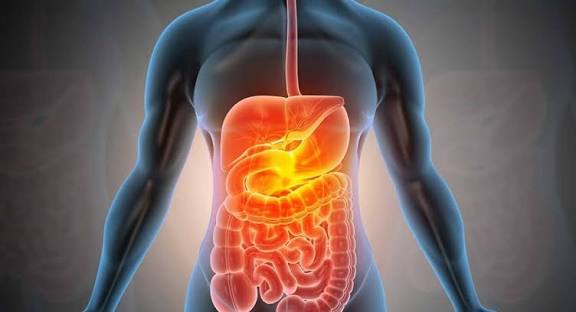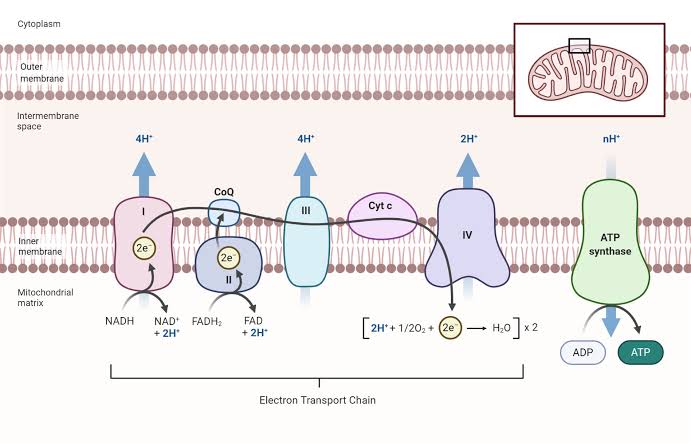
Accurate determination of serum electrolyte levels is a cornerstone of modern clinical diagnostics and a critical component of patient management. Electrolytes are charged particles (ions) that are vital for maintaining physiological functions, including fluid balance, nerve impulse transmission, muscle contraction, and pH regulation. Imbalances in these essential ions can lead to severe health complications, necessitating precise and timely laboratory estimation.
Introduction to Serum Electrolytes and Their Clinical Significance
Serum electrolytes are minerals present in the body fluids that carry an electric charge. The primary electrolytes in serum include:
- Sodium (Na+): The most abundant cation in the extracellular fluid (ECF), critical for maintaining ECF volume, osmotic pressure, and nerve and muscle function. Normal range: 135-145 mmol/L.
- Potassium (K+): The predominant intracellular cation, essential for nerve impulse conduction, muscle contraction (especially cardiac muscle), and maintaining cellular osmotic balance. Normal range: 3.5-5.0 mmol/L.
- Chloride (Cl-): The most abundant anion in the ECF, playing a significant role in fluid balance, acid-base equilibrium, and maintaining electrical neutrality. Normal range: 95-105 mmol/L.
- Bicarbonate (HCO3-): Though often measured as Total CO2 (TCO2), bicarbonate is a crucial component of the body’s primary buffering system, regulating pH balance. Normal TCO2 range: 22-28 mmol/L.
Variations from these normal ranges, such as hyponatremia (low sodium), hyperkalemia (high potassium), or metabolic acidosis/alkalosis, can indicate underlying medical conditions, monitor treatment efficacy, or assess renal and cardiac function.
Principles of Electrolyte Measurement
Modern clinical laboratories predominantly utilize automated analyzers employing Ion-Selective Electrode (ISE) technology for the rapid and accurate determination of Na+, K+, and Cl-. Bicarbonate (or TCO2) is typically measured using enzymatic or colorimetric methods.
- Ion-Selective Electrode (ISE) Methodology:
- Principle: ISEs are electrochemical sensors that measure the concentration of specific ions in a solution. Each electrode has a selective membrane (e.g., glass for Na+, valinomycin-impregnated PVC for K+, anion exchanger for Cl-) that preferentially interacts with a particular ion. This interaction creates a potential difference across the membrane, which is proportional to the logarithm of the ion’s concentration (Nernst equation).
- Measurement: The potential difference is measured between the ion-selective electrode and a stable reference electrode (e.g., Ag/AgCl electrode).
- Advantages: Rapid, accurate, requires small sample volumes, and less susceptible to common interferences like hemolysis or lipemia compared to older methods like flame photometry.
- Enzymatic Method for Bicarbonate (TCO2):
- Principle: Total CO2 in serum (which primarily exists as bicarbonate) is converted to CO2 gas and then measured. A common method involves the enzymatic conversion of phosphoenolpyruvate (PEP) and bicarbonate to oxaloacetate and phosphate, catalyzed by phosphoenolpyruvate carboxylase (PEPC). The oxaloacetate is then reduced to malate by malate dehydrogenase (MDH), with the concomitant oxidation of NADH to NAD+. The decrease in absorbance due to NADH consumption is measured spectrophotometrically and is proportional to the initial bicarbonate concentration.
Reagents Required
For an automated clinical chemistry analyzer employing ISE and enzymatic methods:
- ISE Reagents:
- Electrode Solutions: Specific solutions for the Na+, K+, and Cl- electrodes (e.g., internal fill solutions, membrane conditioners).
- Reference Electrode Solution: Solution for the constant potential reference electrode (e.g., potassium chloride solution saturated with silver chloride).
- Rinse/Wash Solutions: Deionized water or specific manufacturer-provided rinse solutions to clean the sample probes, electrodes, and flow cells.
- Calibrators:
- A set of solutions with precisely known concentrations of Na+, K+, Cl-, and TCO2 at various levels (e.g., low, normal, high). These are crucial for establishing the instrument’s calibration curve and ensuring accurate measurement.
- Quality Control (QC) Materials:
- Commercially prepared control sera or solutions with known, assayed target values for Na+, K+, Cl-, and TCO2. Typically, three levels are used: low pathological, normal, and high pathological, to monitor instrument performance and assay precision and accuracy.
- Bicarbonate (TCO2) Reagents (for enzymatic method):
- Reagent 1: Buffer solution containing PEP, MDH, and auxiliary enzymes.
- Reagent 2: Solution containing NADH.
- These reagents are often provided as multi-component kits or ready-to-use liquid reagents.
- Ancillary Reagents:
- Deionized/Distilled Water: For diluting samples, preparing reagents, and instrument cleaning. Must be of high purity (Type I or Type II).
- Waste Disposal Solutions: For safe collection and disposal of biohazardous and chemical waste from the analyzer.
Instruments Required
The primary instrument for serum electrolyte estimation in modern laboratories is an Automated Clinical Chemistry Analyzer with an Integrated ISE Module.
- Automated Clinical Chemistry Analyzer:
- Components:
- Sample Handling System: Robotic arm with pipetting probe for aspirating primary samples and dispensing precise volumes into reaction cuvettes. Includes barcode reader for sample identification.
- Reagent Handling System: Refrigerated compartments for storing reagents, with probes for aspirating and dispensing reagents.
- Reaction Module: Cuvettes or reaction vessels where samples and reagents are mixed and reactions occur. Often maintained at a constant temperature (e.g., 37°C).
- Detection System: Integrated ISE module for Na+, K+, Cl- measurement, and a spectrophotometer for colorimetric/enzymatic assays (like TCO2).
- Washing System: Automated washing stations for cuvettes and probes to prevent carry-over contamination.
- Data Processing Unit: Computer software for instrument control, data acquisition, result calculation, quality control management, and interface with the Laboratory Information System (LIS).
- Components:
- Ion-Selective Electrode (ISE) Module:
- Typically integrated within the analyzer, housing the specific electrodes for Na+, K+, and Cl-, along with a reference electrode. Samples flow through a channel past these electrodes for potential measurement.
- Ancillary Laboratory Equipment:
- Centrifuge: For separating serum from whole blood. Must be capable of achieving appropriate speeds (e.g., 2000-3000 rpm) to produce a clear serum supernatant.
- Blood Collection Tubes: Standard serum separator tubes (SST) or plain red-top tubes for collecting blood samples.
- Pipettes: Calibrated micropipettes for manual dilution or quality control preparation (though most modern analyzers automate this).
- Vortex Mixer: For thorough mixing of samples or reagents if manual preparation is required.
- Refrigerator/Freezer: For proper storage of samples, reagents, and quality control materials.
- Laboratory Information System (LIS): Essential for managing patient demographics, test orders, results reporting, and data archiving, ensuring efficiency and reducing manual errors.
Methodology: Step-by-Step Guide for Serum Electrolyte Estimation
The following steps outline the procedure for estimating serum electrolytes using an automated clinical chemistry analyzer.
Step 1: Sample Collection and Preparation
- Patient Identification: Verify patient identity using at least two unique identifiers (e.g., full name and date of birth).
- Blood Collection: Perform venipuncture using aseptic technique. Collect blood into an appropriate primary collection tube (e.g., serum separator tube with gel barrier, or a plain red-top tube). Ensure correct filling volume as per tube specifications.
- Clotting: Allow the blood sample to clot at room temperature for the recommended time (typically 15-30 minutes for serum separator tubes, longer for plain tubes without clot activators).
- Centrifugation: Centrifuge the clotted blood sample to separate the serum. Recommended centrifugation parameters are typically 2000-3000 revolutions per minute (rpm) for 10-15 minutes. This yields a clear supernatant serum layer above the blood clot and gel barrier.
- Inspection and Aliquoting (if necessary): Visually inspect the serum for clarity. Note any hemolysis (red discoloration), lipemia (milky appearance), or icterus (yellow discoloration), as these can potentially interfere with certain assays or indicate specific conditions. If the sample cannot be analyzed immediately, aliquot the serum into a separate labeled tube and store appropriately (typically refrigerated at 2-8°C for short-term storage, frozen at -20°C or below for longer periods).
Step 2: Instrument Preparation and Calibration
- Power On and Warm-up: Turn on the automated analyzer and allow it to complete its self-checks and warm-up cycles as per manufacturer instructions.
- Daily Maintenance Checks: Perform routine daily maintenance, which may include checking reagent levels, emptying waste containers, cleaning probes, and verifying system fluid levels.
- Reagent Loading: Load the required ISE solutions, TCO2 reagents, calibrators, and quality control materials onto the analyzer. Ensure they are at the correct temperature (often refrigerated on-board) and that adequate volumes are available for the day’s run. Check reagent expiry dates.
- Calibration: Initiate the calibration procedure using the manufacturer-provided calibrator solutions. The analyzer will automatically aspirate the calibrators, measure their responses, and establish or update its calibration curve for each analyte (Na+, K+, Cl-, TCO2). Calibration should be performed regularly (e.g., daily or as recommended by the manufacturer) and whenever a new lot of reagents is used or quality control results are out of range.
- Quality Control (QC) Run: After successful calibration, run quality control samples at least once per shift or day, and after any major instrument maintenance or reagent lot change.
- Load low, normal, and high-level QC samples onto the analyzer.
- Review the QC results. Plot them on Levey-Jennings charts to monitor trends and identify potential issues (e.g., shifts, trends, random errors).
- If QC results are within the acceptable predefined ranges (often ±2 standard deviations from the mean), proceed to sample analysis. If QC fails, troubleshoot the issue (e.g., check reagents, perform maintenance, re-calibrate) before analyzing patient samples.
Step 3: Sample Analysis
- Sample Loading: Load the prepared patient serum samples onto the analyzer’s sample rack. Ensure each sample is correctly identified using barcodes or by precise placement according to the instrument’s loading instructions.
- Initiate Run: Start the analysis run.
- Automated Processing:
- The analyzer’s robotic arm will aspirate a precise volume of each serum sample.
- For Na+, K+, Cl-: The sample is presented to the respective ISE electrodes. The potential difference is measured and converted into ion concentration.
- For TCO2: The sample is mixed with TCO2 reagents in a reaction cuvette, and the enzymatic reaction proceeds. The change in absorbance is monitored spectrophotometrically.
- All measurements are performed automatically within the analyzer’s integrated system.
- Result Display: Once the analysis for each sample is complete, the results are displayed on the analyzer’s screen and typically flagged if they are outside a predefined critical or reference range.
Step 4: Result Interpretation and Validation
- Review Raw Data: Examine the results for any analytical flags, error messages, or suspicious values (e.g., extremely high or low results that are inconsistent with the patient’s clinical picture).
- Quality Control Review: Confirm that the QC results for the analytical run were acceptable.
- Delta Checks (if applicable): Compare current results with previous results for the same patient (if available) to identify significant changes that might indicate a physiological shift or a laboratory error.
- Clinical Correlation: For critical or unexpected results, liaise with the requesting clinician to provide context and determine if further action (e.g., repeat testing) is necessary.
- Validation and Reporting: Once the results have been reviewed and validated by a qualified laboratory professional, they are typically automatically transmitted to the Laboratory Information System (LIS) and then released to the patient’s electronic health record for clinician review.
Step 5: Post-Analysis Procedures
- Sample Off-loading: Remove analyzed samples from the analyzer. Store them appropriately for a designated retention period in case repeat testing is required.
- Instrument Shutdown/Cleaning: Follow the manufacturer’s guidelines for daily or end-of-run cleaning and shutdown procedures. This typically involves running cleaning cycles and emptying waste.
- Waste Disposal: Dispose of all biohazardous materials (e.g., used sample tubes, tips, and liquid waste) and chemical waste according to laboratory safety protocols and local regulations.
- Documentation: Maintain comprehensive records of calibration, quality control, maintenance, and patient results as required by laboratory accreditation standards.
Quality Control and Troubleshooting
Rigorous quality control is paramount in electrolyte estimation. Daily internal quality control, participation in external quality assurance (EQA) programs, and regular instrument maintenance are essential. Common issues that can lead to erroneous results include:
- Pre-analytical: Hemolysis (releases intracellular K+), lipemia/icterus (can optically interfere, though less with ISE direct methods), improper sample collection or storage, prolonged tourniquet application.
- Analytical: Reagent expiry or degradation, electrode fouling, instrument malfunction, carry-over contamination, calibration errors.
- Post-analytical: Transcription errors, incorrect result reporting.
Thorough troubleshooting guided by manufacturer manuals and experienced laboratory personnel is critical to resolve discrepancies and ensure reliable results.
Conclusion
The estimation of serum electrolyte levels is a fundamental diagnostic procedure, providing invaluable insights into a patient’s metabolic and physiological status. The advent of automated clinical chemistry analyzers with advanced ISE technology has revolutionized the speed, accuracy, and efficiency of these tests. By adhering to meticulous sample collection protocols, precise laboratory methodologies, and robust quality control measures, laboratories can deliver accurate and timely electrolyte results, significantly impacting clinical decision-making and optimal patient care.







